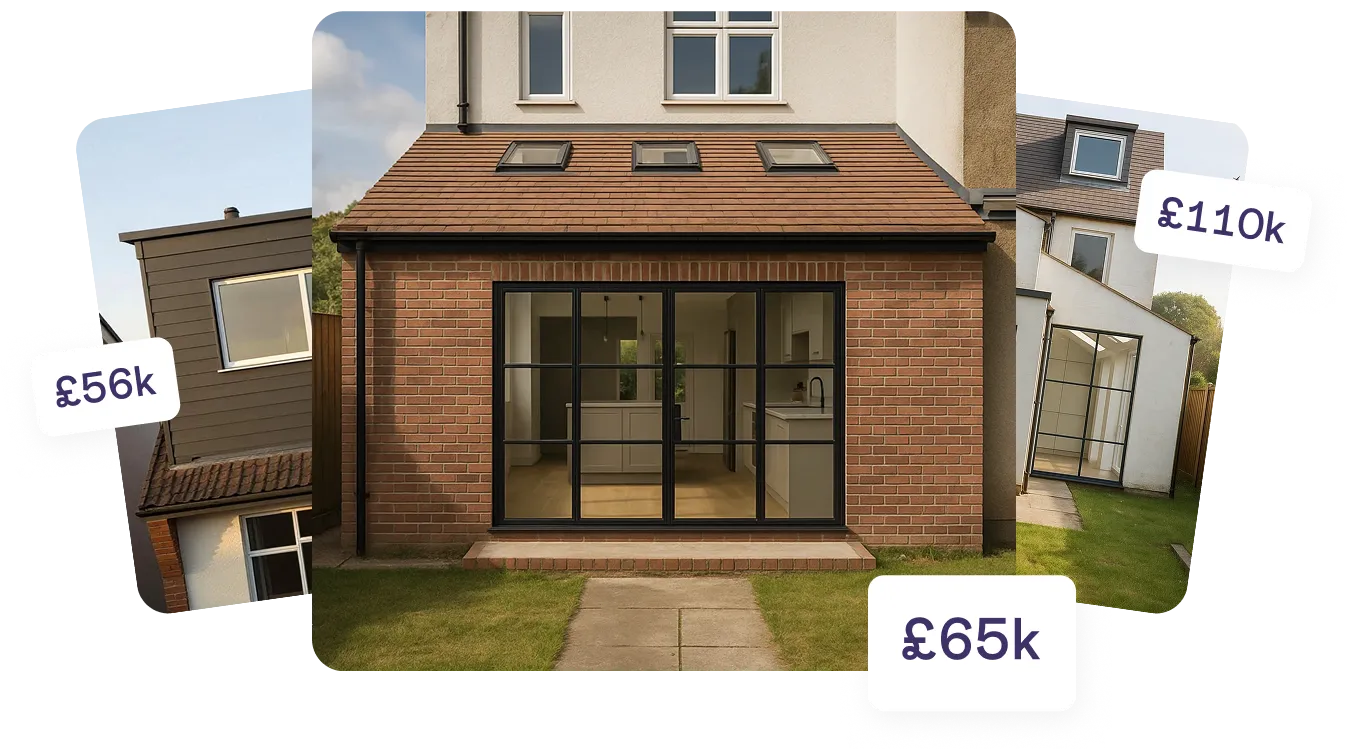For insulation, Part L of building regulations demands that flat roofs must have U values of 0.18 W/m2K or lower. Although flat roofs were traditionally constructed using ‘cold decks’, ‘warm decks’, otherwise called warm roofs, are more popular these days since they’re easier to build and are far more thermally efficient.
The final detail of a flat roof is its covering. Depending on your budget and the look you’re going for, you could choose between a torch-on-felt flat roof, an EPDM rubberised roof, fibreglass reinforced plastic (GRP), a green flat roof, or ask your architect to explore further options.
Discuss your project with a Resi expert today for information on the materials best suited to your budget.
Benefits of a flat roof kitchen extension
- Flat roof kitchen extensions are more cost-effective
- Flat roof kitchen extensions are easier and faster to construct than their pitched counterpart
- The modern look of flat roofs makes them perfect for more contemporary buildings
- Flat roofs can incorporate important design elements like skylights, roof lanterns, and light wells
- Flat roofs also come with design opportunities that would be impossible with a pitched roof, such as converting your flat roof into a valuable outdoor space like a terrace or roof garden
Get a free quote for your flat roof kitchen extension
Ideas of flat roof kitchen extensions
Here is a selection of flat roof kitchen extensions from the Resi portfolio that should inspire your upcoming project and spark some creative ideas!
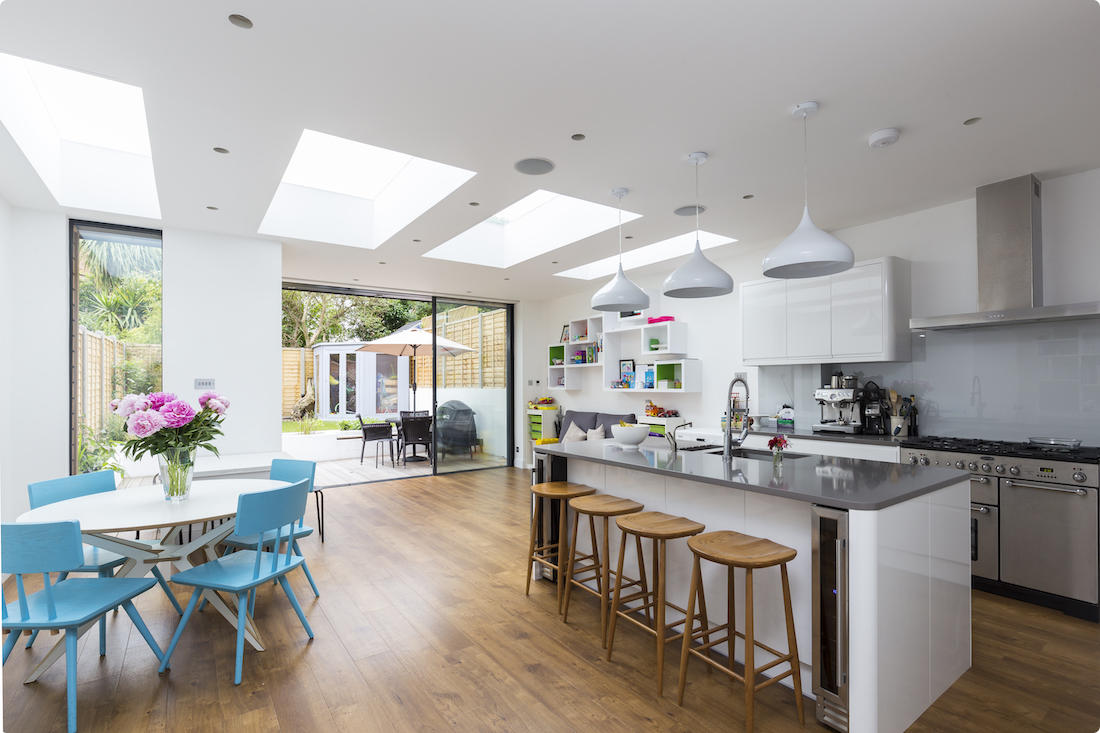
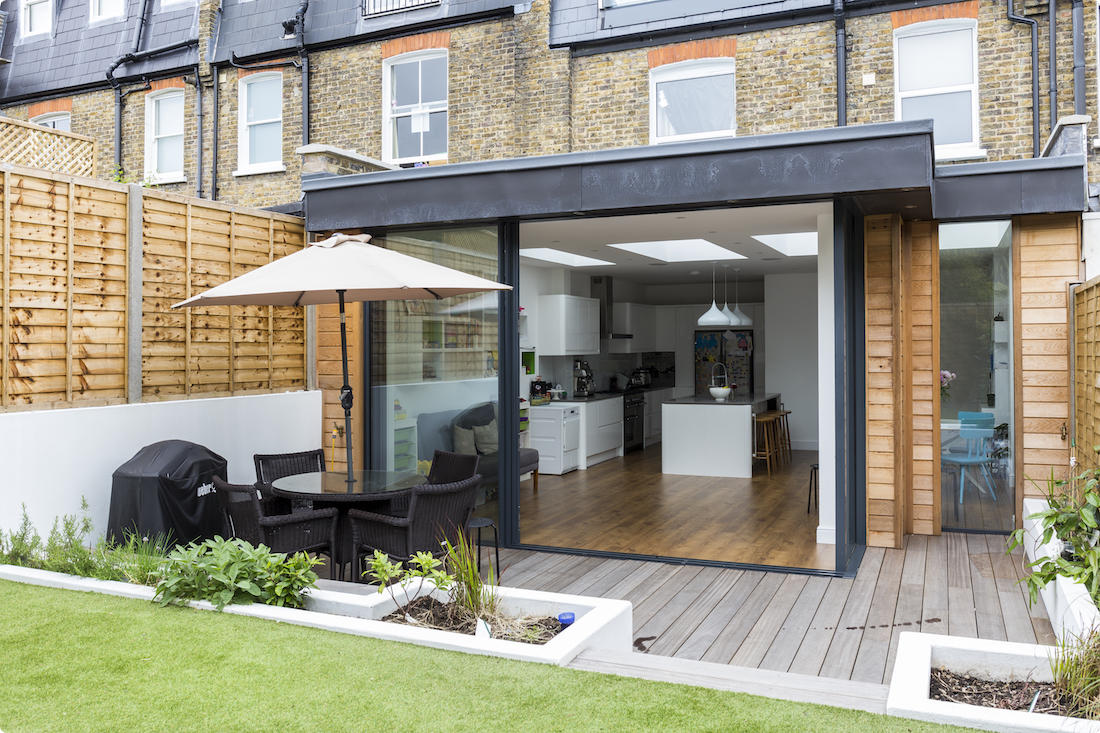
This London flat roof kitchen extension from 2016 uses a mix of materials to blend both the modern and rustic. Along with large sliding doors and staggered glazing, we also included large skylights to help the entire kitchen area stay well lit throughout the day. The in-built storage also helps this family stay clutter free.
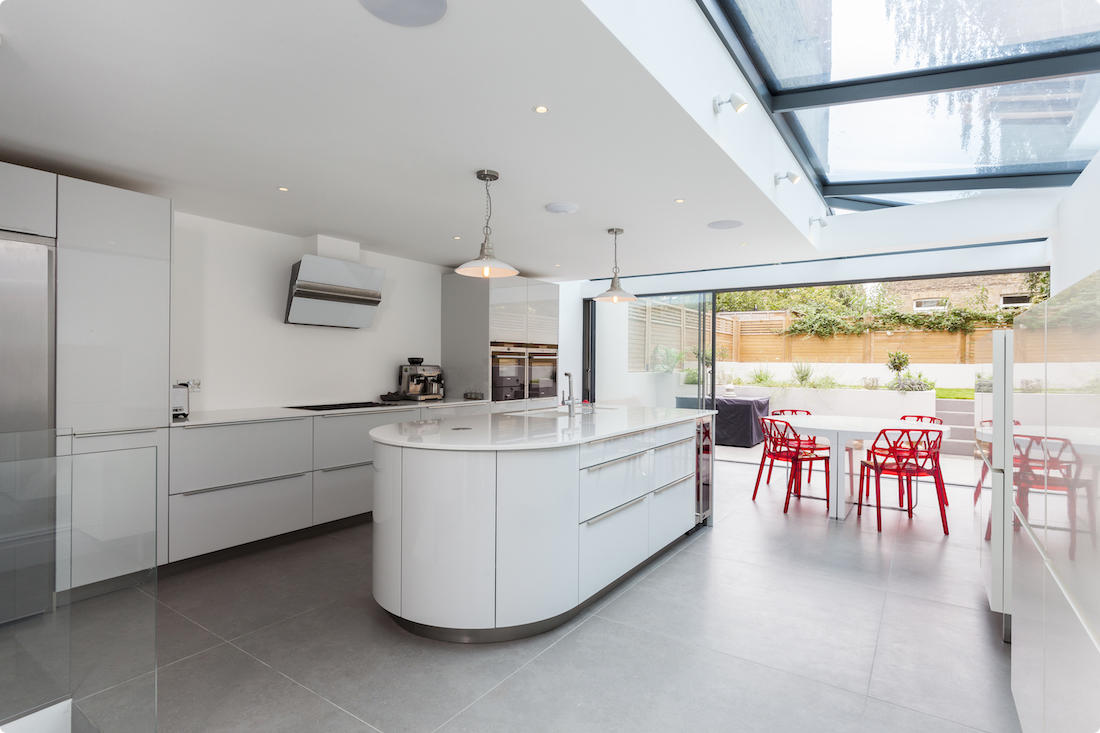
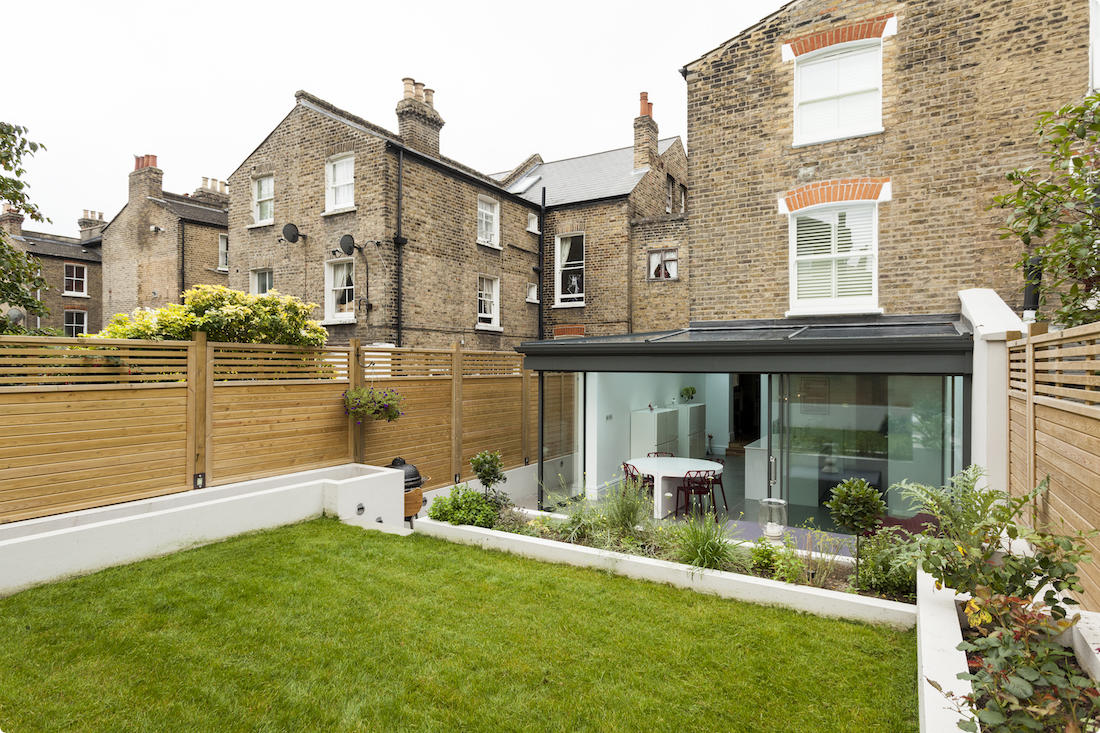
For this London kitchen extension, the brief was to include glazing, glazing, and more glazing. Not only did we design a full glass ceiling for the wraparound, we also used structural work to create a floating corner that would allow the glass to travel all the way around the extension. This provides stunning green views for this urban family to enjoy!
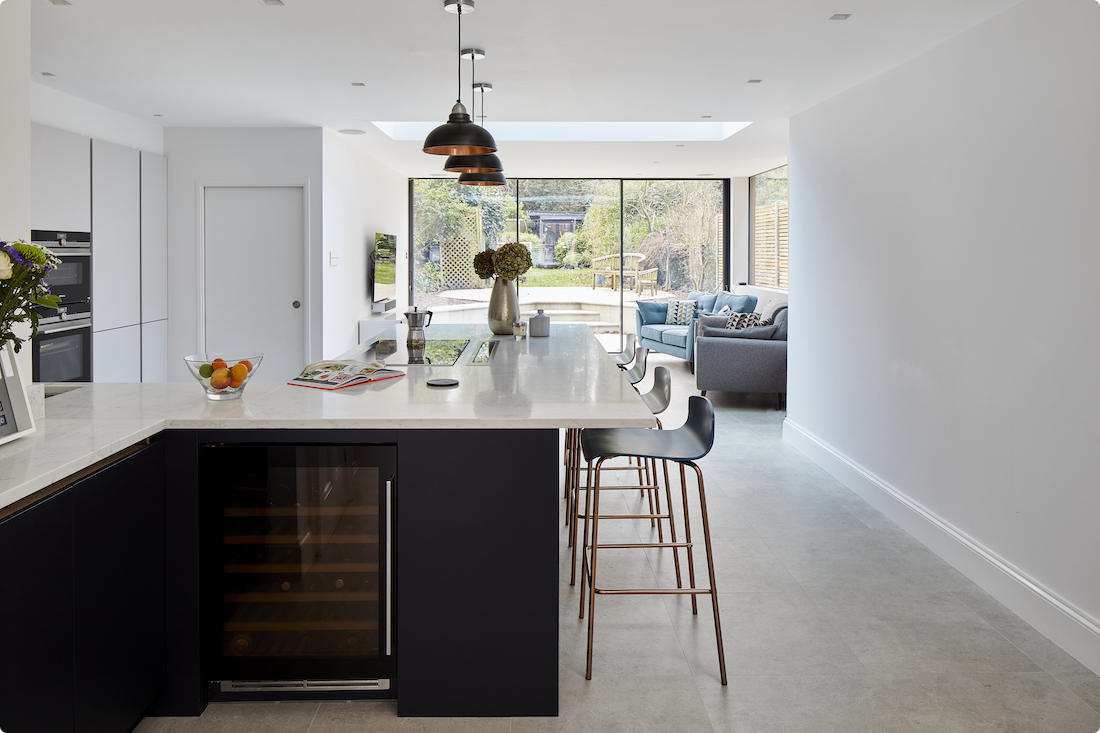
This stylish wraparound extension was completed in 2019 in Lewisham. To create this flat roof kitchen, we subtly extended out into the side of the property, before combining this with a rear addition. This gave enough space for an open plan kitchen and living room - plus a utility room too
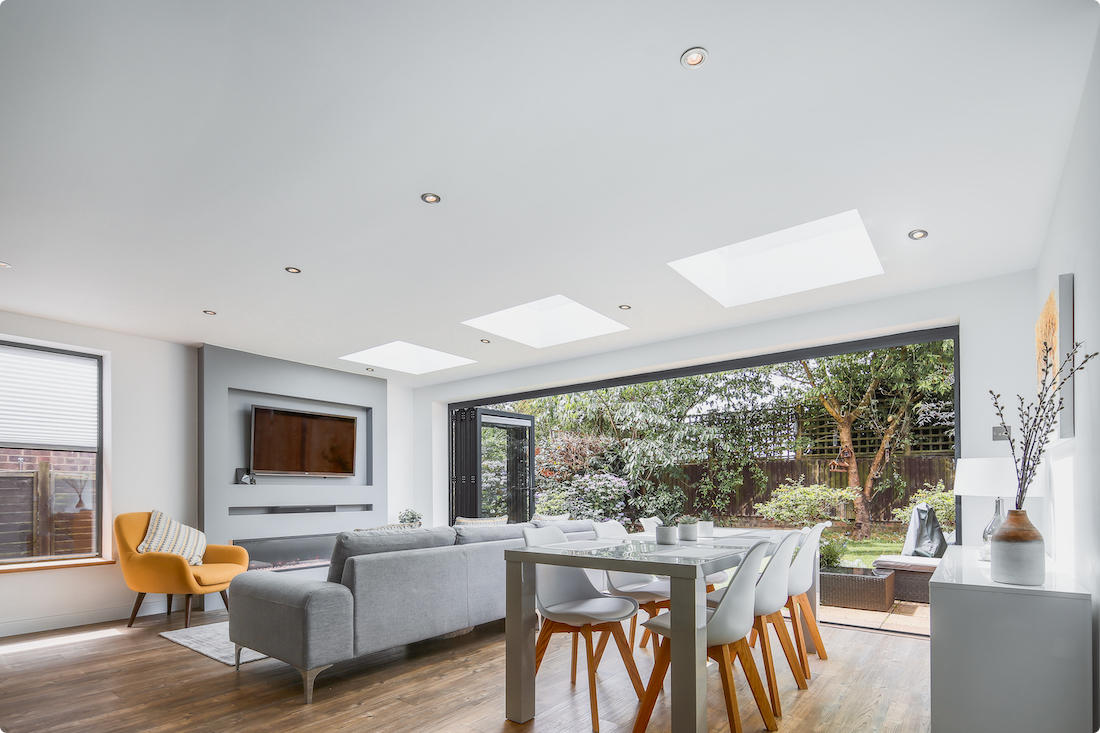
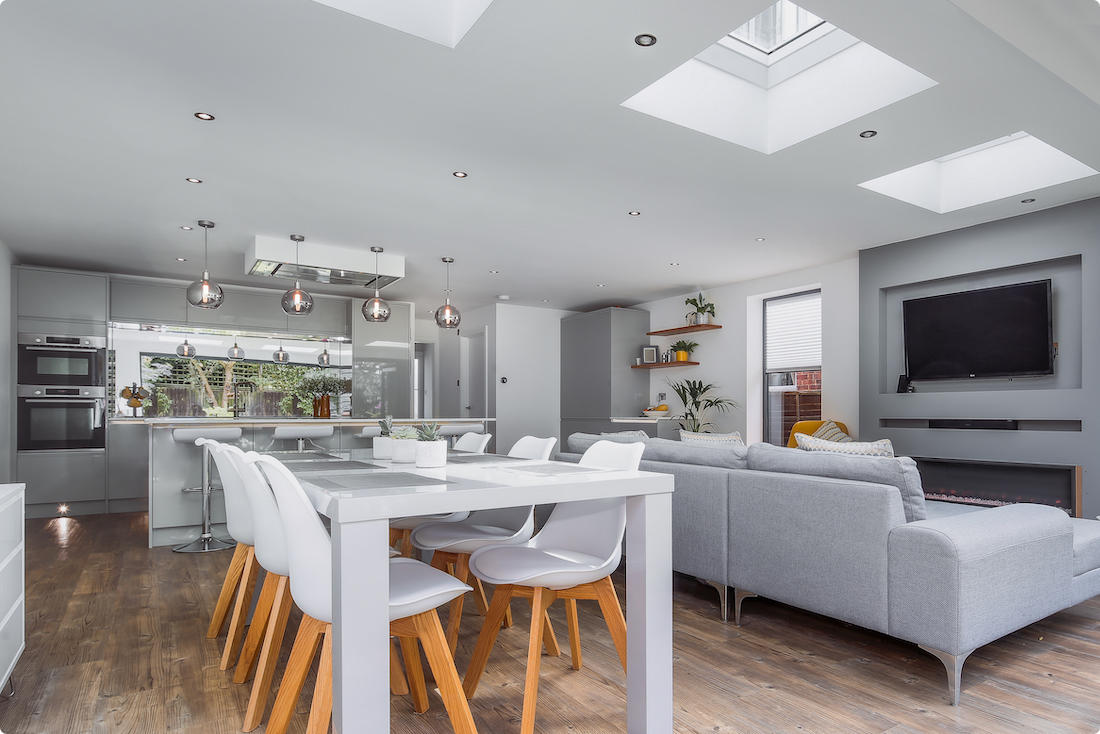
This is a sleek kitchen extension in Runnymede, completed in 2020. We created so much space by extending both to the rear and combining this with a garage conversion too. Now the homeowners get to enjoy a dining room, kitchen, and living room in one. What’s more, with the bi-fold doors, they can enjoy a more intimate connection to their green space too. Learn more about this flat roof kitchen extension here.
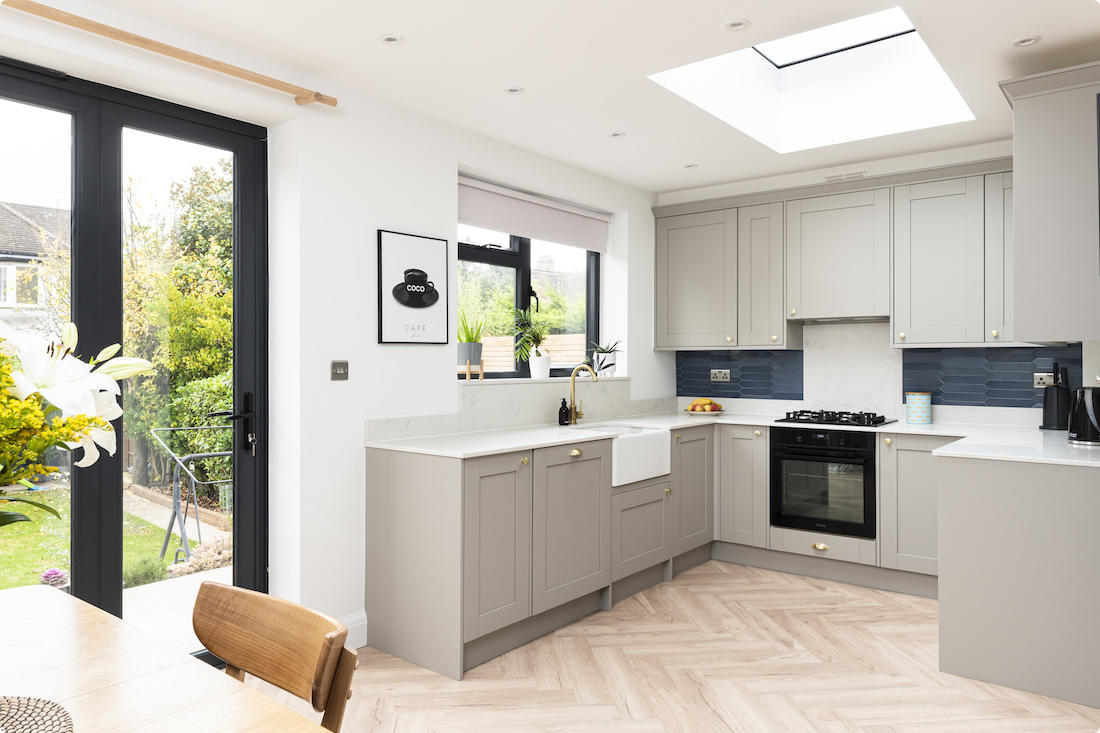
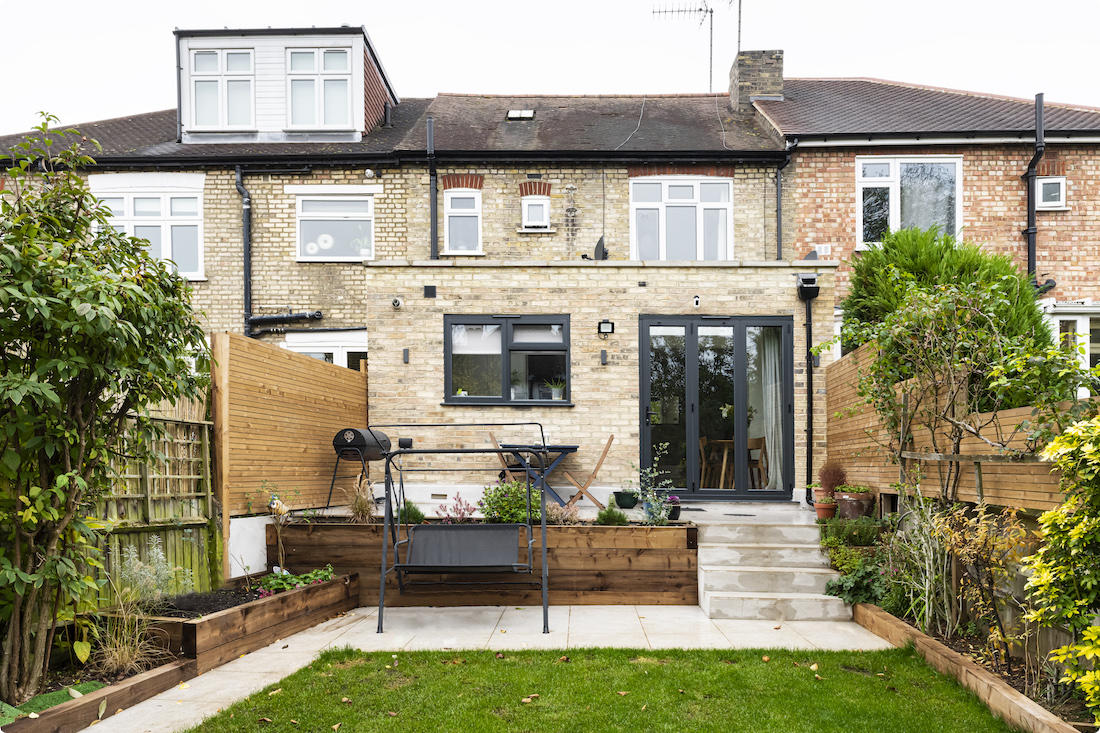
A cosy kitchen and diner in the heart of Barnet, London. We used a matching brick facade to blend this flat roof extension in with the rest of the building. The french doors out into the garden help to direct sunlight down through the dining area and into the rest of the home, while a skylight over the cooking stations means they get the most out of sunny days. Learn more about this rear extension here.
Do I need planning permission for a flat roof kitchen extension?
You don’t need planning permission if your project falls within the boundaries of permitted development rights. These rights allow homeowners to add certain extensions to their homes without applying for a full planning permission, provided they follow the stipulated guidelines.
Nonetheless, there are exceptions to this rule. If your home is a flat, maisonette, a listed building, or, in a conservation area, your permitted development rights may be limited or non-applicable. And even if the permitted permission rights cover your home, you’ll still need a local authority to sign off your extension for legal certification.
How much does a flat roof kitchen extension cost?
Several factors could affect the cost of installing a flat roof kitchen extension. These factors include:
- The size of the extension
- The materials you choose to use
- The complexity of the design
- Where your home is located in the UK
All in all, a flat roof kitchen extension could cost an average of £1,850 per square meter.
However, kitchen extensions come in all shapes and sizes, meaning prices vary widely from project to project. For a tailored construction estimate, try our free online calculator.
How long will it take to build?
Depending on your project’s complexity, construction alone can take anywhere from 8 to 16 weeks. Combined with the time it’ll take to align your building regulations, obtain planning permission and settle potential party wall matters, it could take about 8 to 12 months to finish up your entire project.
Other important considerations
If you’re wondering if adding an extension will increase your council tax, the answer is no. This can be a tad confusing because council tax is paid based on the value of your home, and the addition of a kitchen extension is sure to increase the value of your home.
Nevertheless, the present law states that any alterations or extensions will not affect the council tax evaluation band until the property is sold. This means that as long as you’re living in that home, you won’t experience any increase in your council tax.
How much value will a flat roof extension bring to your home?
The complexity of your project, its impact on the functionality of your home, and the state of the market at the time, will determine home much value installing a flat roof extension adds to your home.
Still, you should investigate the price ceiling for houses in your area before going ahead with your project. You don’t want to add so much value to your home only to find out that it can't be sold at a profitable price.
Here at Resi, we understand that while the thought of adding that extension to your home may be very appealing, the details and processes involved can be pretty daunting. Luckily, our all-in-one platform simplifies the process and allows you to undertake your flat roof kitchen extension with ease - we can even offer financing solutions!
Contact us today to calculate how much your extension would cost and find out more about financing your project.











